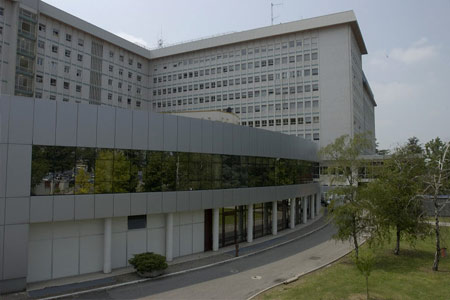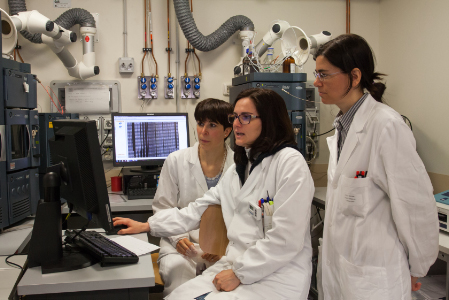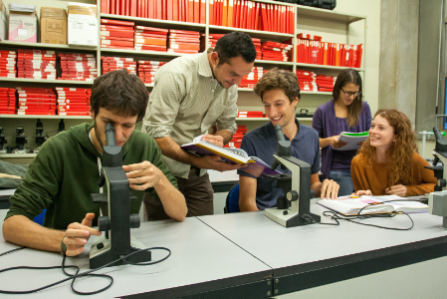- Autori:
-
Cesaro, Simone; Pillon, Marta; Sauer, Martin; Smiers, Frans; Faraci, Maura; Diaz de Heredia, Cristina; Wynn, Robert; Greil, Johann; Locatelli, Franco; Veys, Paul; Uyttebroeck, Anne; Ljungman, Per; Chevalier, Patrice; Ansari, Marc; Badell, Isabel; Güngör, Tayfun; Salim, Rahuman; Tischer, Johanna; Tecchio, Cristina; Russell, Nigel; Chybicka, Alicja; Styczynski, Jan; Krivan, Gergely; Smith, Owen; Stein, Jerry; Afanasyev, Boris; Pochon, Cécile; Cristina Menconi, Maria; Bosman, Paul; Mauro, Margherita; Tridello, Gloria; Peffault de Latour, Regis; Dufour, Carlo
- Titolo:
-
Correction: Long-term Outcome After Allogeneic Hematopoietic Stem Cell Transplantation for Shwachman-Diamond Syndrome: A Retrospective Analysis and a Review of the Literature by the Severe Aplastic Anemia Working Party of the European Society for Blood and Marrow Transplantation (SAAWP-EBMT)
- Anno:
-
2020
- Tipologia prodotto:
-
Articolo in Rivista
- Tipologia ANVUR:
- Articolo su rivista
- Lingua:
-
Inglese
- Formato:
-
A Stampa
- Referee:
-
Sì
- Nome rivista:
- BONE MARROW TRANSPLANTATION
- ISSN Rivista:
- 1476-5365
- Intervallo pagine:
-
1-14
- Parole chiave:
-
SWACHMAN DIAMOND SYNFROME; ALLOGENEIC HEMATOPOIETIC STEM CELL TRANSPLANTATION
- Breve descrizione dei contenuti:
- Allogeneic hematopoietic stem cell transplantation (HSCT) is a curative procedure in patients with Shwachman–Diamond syndrome (SDS) with bone marrow abnormalities. The results of 74 patients with SDS (6 acute myeloid leukemia, 7 myelodysplastic syndrome, and 61 bone marrow failure) treated with HSCT between 1988 and 2016 are reported. The donor source was: 24% sibling, 8% parent, and 68% unrelated donor. The stem cell source was: 70% bone marrow, 19% peripheral blood stem cells, and 11% cord blood. The conditioning regimen was myeloablative in 54% and reduced intensity in 46%. Neutrophil engraftment was achieved in 84% of patients after a median time of 17.5 days. Graft failure occurred in 15% of HSCTs. Grades I–IV acute and chronic GVHD were observed in 55% and 20% of patients, respectively. After a median follow-up of 7.3 years (95% CI 4.8–10.2), 28 patients died for progression/relapse (7) or toxicity (21). The 5-year overall survival and nonrelapse mortality were 63.3% (95% CI 50.8–73.4) and 19.8% (95% CI 10.8–30.8), respectively. In conclusion, this is the largest series so far reported and confirms that HSCT is a suitable option for patients with SDS. Further efforts are needed to lower transplant-related toxicity and reduce graft failure.
- Id prodotto:
-
114725
- Handle IRIS:
-
11562/1018740
- ultima modifica:
-
25 ottobre 2022
- Citazione bibliografica:
-
Cesaro, Simone; Pillon, Marta; Sauer, Martin; Smiers, Frans; Faraci, Maura; Diaz de Heredia, Cristina; Wynn, Robert; Greil, Johann; Locatelli, Franco; Veys, Paul; Uyttebroeck, Anne; Ljungman, Per; Chevalier, Patrice; Ansari, Marc; Badell, Isabel; Güngör, Tayfun; Salim, Rahuman; Tischer, Johanna; Tecchio, Cristina; Russell, Nigel; Chybicka, Alicja; Styczynski, Jan; Krivan, Gergely; Smith, Owen; Stein, Jerry; Afanasyev, Boris; Pochon, Cécile; Cristina Menconi, Maria; Bosman, Paul; Mauro, Margherita; Tridello, Gloria; Peffault de Latour, Regis; Dufour, Carlo,
Correction: Long-term Outcome After Allogeneic Hematopoietic Stem Cell Transplantation for Shwachman-Diamond Syndrome: A Retrospective Analysis and a Review of the Literature by the Severe Aplastic Anemia Working Party of the European Society for Blood and Marrow Transplantation (SAAWP-EBMT)
«BONE MARROW TRANSPLANTATION»
,
2020
,
pp. 1-14
Consulta la scheda completa presente nel
repository istituzionale della Ricerca di Ateneo 








